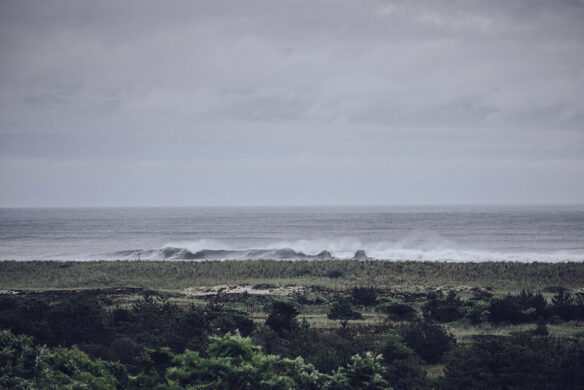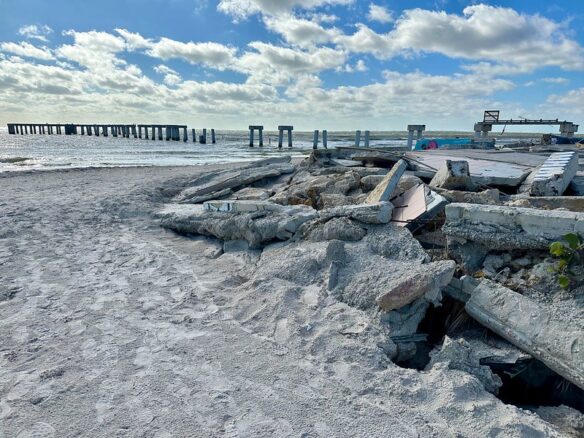Excerpt:
Diseases from land animals are killing marine mammals at an alarming rate. Can we stem the flow of feces?
Pádraig Duignan snaps on a pair of latex gloves in the Marine Mammal Center’s necropsy lab. Located north of San Francisco, California, the lab occupies a space behind a large metal garage door; the door is open on this chilly October day and Pacific Ocean fog surges past. Spread out on a steel table before Duignan are the carcasses of two California sea lions. With a scalpel, he carefully cuts a section of muscle away from the ribs of one of the carcasses and holds a glistening membrane to the lights.
“This is what the diaphragm of a healthy sea lion looks like,” he says, tracing a finger over the tissue. Tight patterns of muscle fibers are interlaced with a mesh of small blood vessels that supply them with oxygen. For a sea lion, an animal capable of diving to depths of over 300 meters, a strong, healthy diaphragm is critical. Duignan reaches below his workstation and retrieves a clear plastic bag. Inside is another slice of diaphragm tissue, different in appearance from the first, taken from an animal suffering from a disease called sarcocystosis…
Sarcocystosis is only one of numerous terrestrial diseases that infect and kill marine mammals. Last year, an outbreak of leptospirosis, a bacterial disease transmitted by rats, dogs, livestock, and other land animals, caused the death of more than 150 sea lions along the Oregon coast. Brucellosis, another bacterial disease, is often associated with domestic cattle and has been documented in whales and seals along the Alaskan coast, where the pathogen is not passed on by cows but by caribou and reindeer…
Karen Shapiro, an associate professor of pathology, microbiology, and immunology at the University of California, Davis (UC Davis), specializes in aquatic zoonotic pathogens. She says the rise in terrestrial diseases in marine mammals illustrates what she and her colleagues refer to as the land-sea connection, in which urbanization and its attendant alteration of habitat have led to a rise in diseases affecting marine mammals.
Urban and suburban landscapes—with their vacant lots, alleyways, green belts, and various nooks and crannies—provide plentiful safe havens for opossums, feral cats, rats, mice, and dozens of other species that are the terrestrial hosts for an array of pathogens. As cities expand, so, too, do populations of these animals that thrive in human-altered landscapes and are potential reservoirs of disease. Given that 40 percent of the planet’s human population resides within 100 kilometers of a coastline, this is a global problem….
In the aftermath of this year’s atmospheric river storms in California, rescuers saw a rash of sick sea otters along the outlet of the Pajaro River, near Monterey. The outbreak, Shapiro says, was likely linked to the huge volumes of runoff flowing into the ocean from the agricultural and urban landscapes of the Salinas Valley. Major storms create “flushing events” that expose sea otters, sea lions, and other marine mammals to massive amounts of pollutants and pathogens.
“California has a very distinct dry season and wet season,” Shapiro says. “For months, we have an accumulation of feces from cats, for Toxoplasma, and from opossums, which are the definitive hosts for Sarcocystosis. After the first few rains, all this waste is carried to the coast…”
Climate change has had the unfortunate effect of intensifying the flushing events caused by atmospheric rivers, boosting precipitation and, thus, the amount of runoff ending up in the sea. But that’s only part of the problem. The global ocean has absorbed 90 percent of the excess warming generated by human emissions, and in general, a warmer ocean is a sicker ocean. Higher marine temperatures can lead to massive algal blooms; some of these, like the alga Pseudo-nitzschia australis, have well-documented toxic effects on marine mammals.
Ocean warming seems to be a key driver of marine diseases in nonmammals, especially invertebrates like corals and sea stars. A marine heatwave known as the Blob coincided with a major outbreak of sea star wasting disease from 2013 to 2016, primarily on the Pacific coast, wiping out populations of over 20 sea star species; almost six billion sunflower stars alone were killed from Alaska to Mexico. As Drew Harvell, a professor of marine ecology at New York’s Cornell University, wrote in her 2019 book Ocean Outbreak, “We have created a perfect storm of outbreak conditions … Given the many ways we have mistreated our oceans and made conditions friendlier to microbes, it is no wonder that we are beginning to see more outbreaks of marine diseases…”









